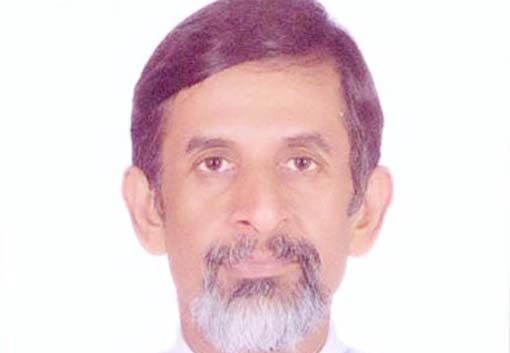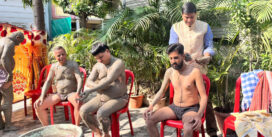- Over 50gw of solar installations in india are protected by socomec pv disconnect switches, driving sustainable growth
- Draft Karnataka Space Tech policy launched at Bengaluru Tech Summit
- एसर ने अहमदाबाद में अपने पहले मेगा स्टोर एसर प्लाज़ा की शुरूआत की
- Acer Opens Its First Mega Store, Acer Plaza, in Ahmedabad
- Few blockbusters in the last four or five years have been the worst films: Filmmaker R. Balki
6 in 1 vaccination – a big boon for babies and parents: says Dr. Sanjeev Rawat

Immunization coverage in Madhya Pradesh must increase from 77.1% to 90%; more focus is needed in urban areas
Madhya Pradesh; June 2022: Children are exposed to an innumerable number of germs, some of which can cause serious diseases. A child’s immune system is still developing, and it cannot fight against all deadly diseases. According to the World Health Organization, immunization is one of the most successful public health interventions to prevent deaths from infections such as diphtheria, pertussis (whooping cough), and tetanus in all age groups. The 6 in 1 combination vaccination protects children from 6 serious illnesses: diphtheria, pertussis, tetanus, haemophilus influenza type B, hepatitis B, and poliomyelitis.
Speaking about this, Dr. Sanjeev Rawat, Director, Child Care hospital Indore and Consulting Pediatrician, Indore said, “Combination vaccinations are beneficial as they protect against six diseases in a single injection. During the pandemic, parents wanted to minimize their child’s exposure to potential infections. Because of this, they looked to avoid multiple visits to the clinic or hospital, even for their children’s routine vaccination. Combination vaccinations help avoid the possibility of missing out on vaccination because of the fear of COVID-19 or a parent’s busy schedule. By reducing the number of needle pricks and clinic visits, they provide a comfortable and convenient experience for the parents and child, as well as help save the doctor’s time. Therefore, the 6 in 1 combination vaccination is a boon for both parents and babies.”
According to the immunization schedule of the Indian Academy of Pediatrics , children would need to take the DTP-IPV-Hib-HepB vaccines at the age of 6, 10 and 14 weeks. 6-in-1 vaccination provides protection for these 6 diseases. 6 in 1 vaccination would mean that children take only 2 injections (i.e. 6 in 1 vaccination and pneumococcal vaccination) and 1 oral vaccine (rotavirus vaccination) on each of these occasions. Without the combination shot, children would have to take many more injections.
In recent years, India has intensified its efforts to increase immunization coverage in the country, which has resulted in significant improvement as shown by the National Family Health Survey – NFHS-5. The percentage of children aged 12 to 23 months who are fully vaccinated* has increased from 62% (NFHS-4; 2015-16) to 76.4% (NFHS-5; 2019-21) in India and from 53.6% to 77.1% in Madhya Pradesh. A recent study has also demonstrated that there has been a marked improvement in immunization coverage in rural areas, but limited improvement in urban areas.
More needs to be done to make parents aware of the benefits of immunization and the availability of vaccines, to increase full immunization coverage to 90% and beyond. With combination vaccinations, children receive fewer shots but get the same level of protection as they would have with separate vaccines.
*based on information from either vaccination card or mother’s recall
I World Health Organization. Immunization. https://www.who.int/news-room/facts-in-pictures/detail/immunization
[1] Indian Academy of Pediatrics. IAP Immunization Schedule 2021 (Figure form)
https://acvip.org/professional/columns/iap-immunization-Schedule-2020-2021-Figure-form [1] Kulkarni S, Thampi V, Deshmukh D, Gadhari M, Chandrasekar R, Phadke M. Trends in Urban Immunization Coverage in India: A Meta-Analysis and Meta-Regression [published online ahead of print, 2021 Sep 16]. Indian J Pediatr. 2021;1-11. doi:10.1007/s12098-021-03843-0


